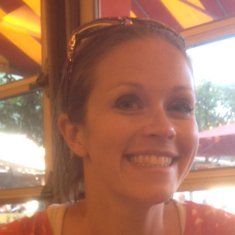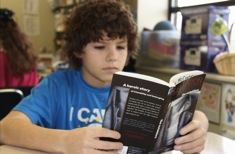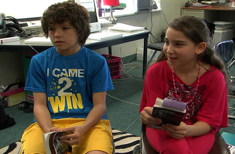Not long ago, I had the privilege of attending an awesome conference with a whole host of inquisitive, reflective, and energized English language arts educators. During our “down” time (we’re never really “down” at conferences, though, right?), Peyton, Dylan, Quinn, and I were chatting excitedly about our classrooms: what had been going well this year, what we were eager to try, and what we couldn’t wait to share with our colleagues when we returned to our schools.
“I really wish I had some people to go back to. This stuff is awesome. Too bad the four of us can’t work together instead,” Quinn chimed in mournfully.
“What do you mean?” I asked. “I bet your team members would love to branch out and experiment.”
“Well, maybe . . .” Quinn lowered her voice. In hushed tones, she confided to us, “But did you know that my teammate Ashlynn still does reading logs?” She shook her head. “I just don’t even know where to start with her.”
Startled by Quinn’s swiftly judgmental pivot, I awkwardly mumbled something like, “Ashlynn’s probably doing other cool things, and maybe reading logs worked well for her students, and boy, it stinks that you feel like that.” On my drive home, I was unable to shake the conversation—both its judgy turn and my weak response. As I tried to make sense of it, I reflected that really, many of us have been in Quinn’s shoes. I was hopeful that her comments were rooted in a place of desire to connect and dream with other educators who were going out of their way to learn new things just as she was, and thought that perhaps this was part of a bigger conversation.
A New Take on Teacher Vulnerability
Leading up to the first time I presented at a conference, my presentation group shared with each other our experiences with professional vulnerability, a topic explored by Julie Johnson in the Choice Literacy article “Teacher Vulnerability.” We’d all experienced the same phenomenon: The more we had branched out professionally, the more we’d all been on the receiving end of some surprisingly negative reactions. Some of us had heard passive-aggressive comments about how it “must be nice” to have so much time for extra professional activities, as well as half-joking asides about how we were making our colleagues “look bad.” We’d all worked on the balancing act of sharing our knowledge and ideas without looking like show-offs, at times hiding what we were writing, or diminishing where we were going and with whom, to prevent a backlash.
I’m sure Quinn had felt the same conflicts, and I empathized. Yet I wondered about what had motivated her to try to indulge me—someone she didn’t know well yet evidently wanted to share a classroom with—in a little “Ashlynn is SO not with it” chat.
It came together for me on Instagram, of all places, and from Jay-Z, of all people. “Re-grammed” on my Instagram is now this tidy little thinker: “Don’t tell me what was said about me. Tell me why they were so comfortable saying it to you.”
What kind of impression had I given Quinn about my collegial relationships? Because I spend so much quality professional time with people outside my school, had I given the impression that I prized my extended professional learning network (PLN) over my immediate network? That I’d found my immediate, inherited colleagues less desirable than my far-flung, hand-selected colleagues?
I do love my PLN. One of the beautiful parts of these digital times is that when I feel overwhelmed and isolated, I can connect with people who “get it,” who “get me,” and who don’t feel threatened when they inspire me to become better for my students. At times our PLNs can seem like our safest professional places. We can openly celebrate success, and we can thoughtfully challenge each other, without fear of professional backlash. For many teachers, our PLNs sustain us.
Valuing My Colleagues
In focusing on my PLN, I wonder if I sometimes lose opportunities to develop the relationships around me, and to being open to being brought along by those around me. I wonder if I unwittingly establish “me/them” boundaries by focusing on the celebrations and the challenges in my PLN.
I also wonder when I read the hand-wringing in social media about the effect of collegial relationships and the healthy culture of a school when I read musings like these:
- “Before my students came to me, they weren’t readers.”
- “When my students leave me, I know they’re going to rooms where they will not read.”
- “I dream of @_____ and @_____ opening their own school, and we could create the most amazing literacy community.”
By the way, these are representative of sentiments I’ve heard, not taken from any one source.
To be fair, I bet we’ve all had those thoughts. I admit that I have. We love our students, and we all worry about what will become of them when they leave our rooms. We all develop perceptions and assumptions (right or wrong) about the classrooms preceding and following our own. I confess to having my own slightly creepy obsession with Kelly Gallagher that, if given the opportunity, would probably lead me to drag my little family across the country just to run “Article of the Week” copies for him.
The problem in repeatedly fixating and vocalizing these feelings, either to colleagues or out in the great wide digital world, is that these words have power. Words can cut in unintentional ways. We think that our colleagues won’t find out that we’re talking about them, or that they’ll read our words. We’re conscious that we shouldn’t view children with a deficit mindset, but what about our colleagues? Whether our judgy sentiments like Quinn’s are discovered or not, is it possible that even just having the deficit mindset can be damaging to our collegial relationships and then to our schools?
Love the One(s) You’re With
Sometimes, of course, I see or hear about practices that make me cringe. When I hear about teachers who plod through worksheet after worksheet with their classes, pounding Rigorous Texts! into their students’ heads, of course my critical thoughts run wild. I also wonder, How is change best accomplished? Through the quiet whispers of judgment? Through continuing to lament about the colleagues I wish I had? Through reflecting just with my PLN instead of risking courageous conversations?
Or is change best accomplished through building relationships, and calming fears in a very fearful time in education? Perhaps it’s best accomplished by welcoming people into the fold by consciously taking appreciative stances toward the teachers in our grade levels, our schools, and our districts. By taking a closer look at what’s going well in their classrooms. And by letting them know that we’re all going to be okay—that, to quote one of my mentors, we need to take “leaps of faith,” teaching together and working together to do what’s best for kids.







